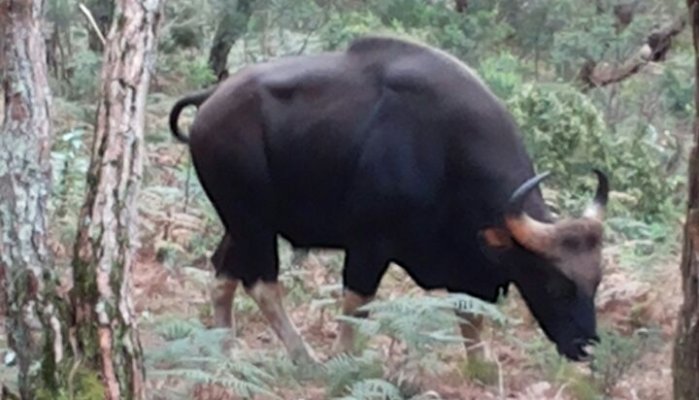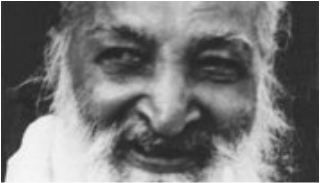|
Yogacharya Krishnamacharya describes a healthy person as one who can experience fully and act from all the nine rasaa.
Indian dance and theatre is built on the idea that a human being experiences nine inner states (words like feeling and emotion do not capture the meaning of the word rasaa; rasaa also means ‘juice’; the implication is that each feeling/ emotion is accompanied by a whole range of inner secretions and bodily changes). These states are:
We don’t usually pay attention to our inner states in the course of our daily activities. However, the ease or otherwise of our spontaneous action states has a profound effect both on the immediate outcome of a situation as well as our long-term health. To illustrate; the situation one is in demands an act of courage, but, one gets caught with fear or overreacts and becomes angry. Since we understand cognitively that certain types of responses are inappropriate, we force ourselves to act in ways we should or must. This puts enormous stress within, robs us of power and energy in the moment of action. We come through as inauthentic. If we observe ourselves we will find that most of us have a propensity towards some of these rasaa and feel blocked with respect to others. A subtler observation will reveal tendency to feel comfortable in certain ways of holding ones body, on further introspection we will discover an inner form of the ‘self’ that we hold. Let me illustrate with a personal example: my height is almost six feet, but when I became sensitive to the inner form of myself that I hold I was very surprised to find that it was of a person considerably shorter and thinner. It was the picture of myself as I was in my teens! On further reflection I discovered that this was related to my yearning for affirmation from people who were significant to me. A persistence of these postural tendencies and inner form impacts the flow of praanaa and ultimately manifests as illness, chronic pain and psychosomatic disease. What is the implication of this? Firstly appropriate, authentic and powerful action is possible only when one has a sense of ease with all the nine rasaa. Secondly, in a context of collective action, ones own blocks manifest themselves as lack of appreciation of other peoples’ talents and tendencies. One also remains blind to contextual triggers that signal an invitation to display the blocked behaviors. Thirdly, insensitivity to ones body is the basis of bad health. Often these slowly developing distortions of praanic flow results in illness that shows up in mid life, just at the time when ones career is taking off and higher responsibilities are being offered! What is the difficulty with practicing this? We deploy ourselves in situations spontaneously, whether at work or play or socially. We never stop to think that our only instrument of action is our body. Even when we exercise, it is to build strength and not to increase our ability to observe our bodies and ourselves in action. Equanimity seems like a passive state, neutrality has no drama associated with it. So it is difficult to understand that Shaantam is a powerful and potent state to be in. Practice will start only when one is convinced of its power. Karma : The clear drum beat of wholesome self assertion arises from the svaadhitaana chakra Being proactive
1 Comment
I encountered a very difficult context in my work life when I was very young adult; our family business went into a tailspin at this time. Simultaneously the family context also suffered badly. However, I also met some extraordinary people at this time, the Krishnas of my life, namely J. Krishnamurti, Yogacharya Krishnamacharya and Pulin Krishna Garg. I spent the next ten years of my life learning from them. JK and Krishnamacharya influenced my spiritual journey profoundly, and Pulin influenced my professional journey. Without the inner transformations the outer challenges could well have over powered me! So I speak from a conviction born of personal experience when I speak about the extraordinary power of the inner work in impacting all aspects of ones’ life.
When I ask a group of people “what is Yoga?” I usually get two sets of answers, from two ends of the spectrum. One set of answers are around the ‘ultimate aim’ namely union with Paramaatma. The other set is around the practice and benefits of Aasana and Praanaayaama. There is nothing wrong with these answers per se, however, the real power of Yoga lies in its width, its depth, and its simplicity. What I think will be useful to explore is the ground that lies between these sets of answers, what the Yoga Sutras call Antaranga Yoga, or the inner work. This is contrasted with the outer (called bahiranga) Yoga, as well as the transcendental called the Nirbeeja (without seed or form). A simple definition of Yoga is “to accomplish that which is beyond ones’ grasp and to sustain this capability”. This is the idea upon which we will ground our exploration and practice. In my coaching sessions I am asked the question “how do I balance my spiritual growth and my professional growth?” more and more often. I don't know if it is because the person being coached knows my background in Yoga, or is it a phenomenon that is more wide spread? Since this is a question dear to my heart I thought I would share my thoughts and what I have gathered in my journey. There are some very powerful concepts that capture the essence of inner work, and the practice of these has the potential to help one become the best that one can be. These practices are offered as areas of sustained enquiry. The one question that is quintessential to this enquiry is to ask oneself “in doing what I am doing, what am I really doing?” I have used seven words/ concepts as the guiding light of my enquiry, and these are: Maitri: Being Trustworthy Value: I value friendship Behaviour: I display compassion in my relationships; I demonstrate respect for others. Introspection: Am I listening to and understanding others? Karma: Being proactive Value: I value action Behaviour: Spontaneous, authentic and appropriate response. Introspection: From what inner space is my action emerging? Dharma: Doing the right thing Value: I value life in all its manifest forms Behaviour: I ensure that my actions are meaningful to me, to others and to the context simultaneously. Introspection: am I enlivening my context and myself through the action? Gnyaana: Internalizing knowledge Value: I value learning and knowledge Behavior: I question things and enquire deeply; I engage in dialogue with learned people Introspection: Am I asking ‘what, why and how’ with a passion to learn? Ramya: Being evocative Value: I value joyousness Behaviour: I bring in a sense of aesthetic enjoyment in my actions; I approach work with an attitude of serious play Introspection: Am I having fun in whatever I am doing? Yoga: Being mindful Value: I value an integration of my energies Behaviour: I practice the essentials of yoga i.e. healthy body, ethical behavior and self -discovery Introspection: am I bringing a deep attention into whatever I do? Abhyaasa: Practice, practice, practice Value: I value the pursuit of excellence Behaviour: I Endeavour to be the best that I can be in every situation, Introspection: Am I improving on the sense of self and my surroundings continuously? How can I be part of the solution? These are the seven words, and the values and behaviour that they imply. There is also the introspection that one can engage with in the self-enquiry. All these words are found in the Yoga Sutras and the Gita. They find an echo in all Indian traditions. Many of these ideas are found in the Buddhist, Jain, Sufi and Sikh traditions. These seven words also reflect the pragmatic expression of the seven Chakras. We will discuss these concepts in the series of papers that follow. |
Raghu's BlogMy work revolves around helping individuals, groups and organizations discover their Dhamma, and become “the best they can be”. This aligns with my own personal saadhana. I have restated this question for my self as follows: “how can I be in touch with the well spring of my love for the world and my love for my self simultaneously” Archives
October 2017
Categories |


 RSS Feed
RSS Feed
